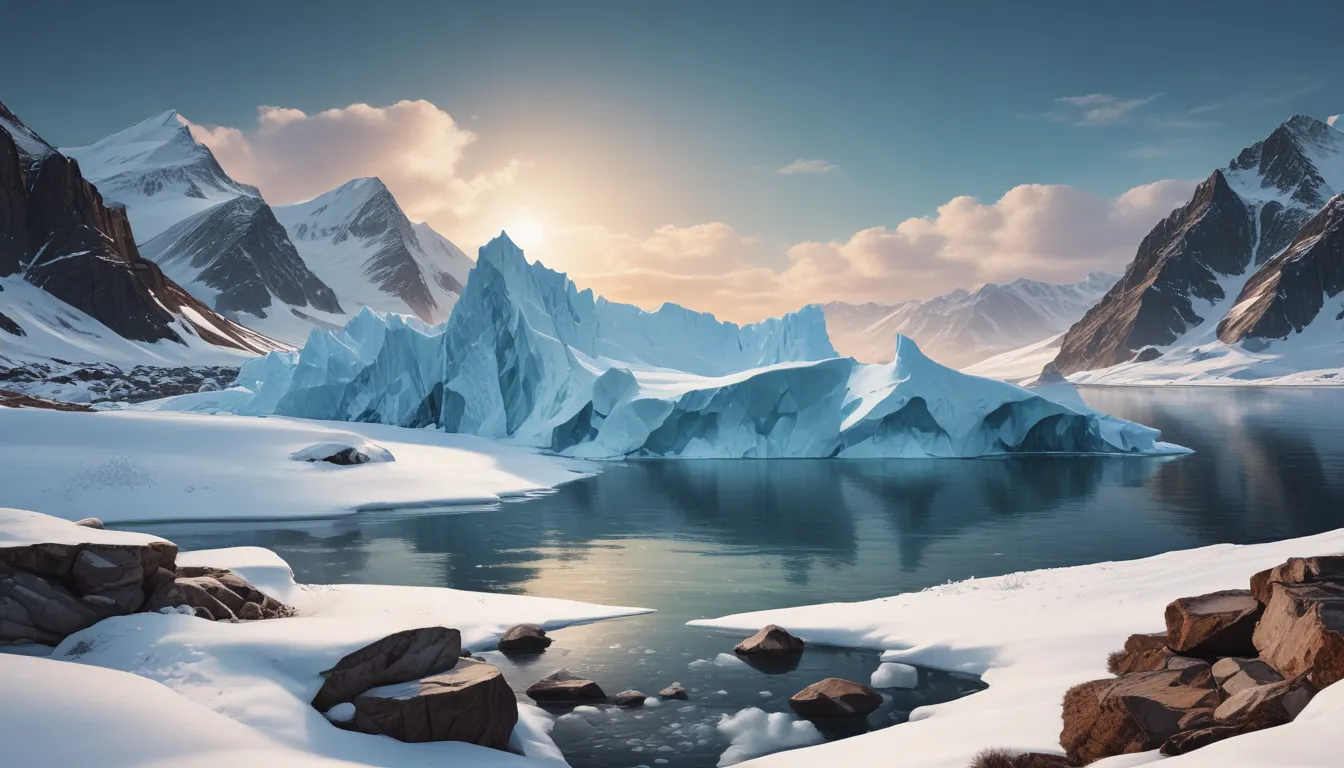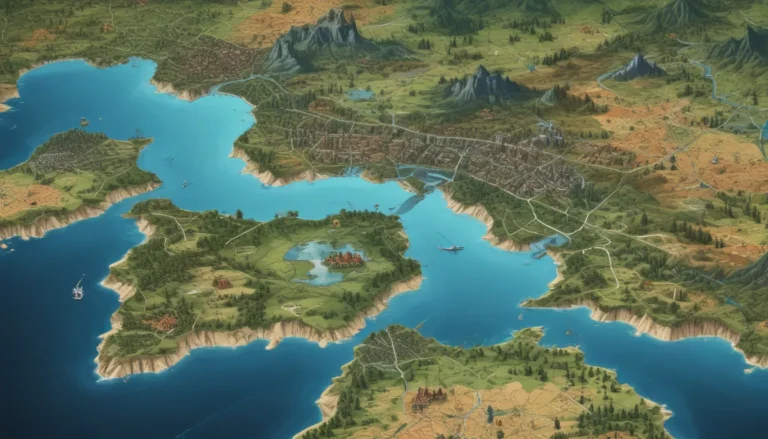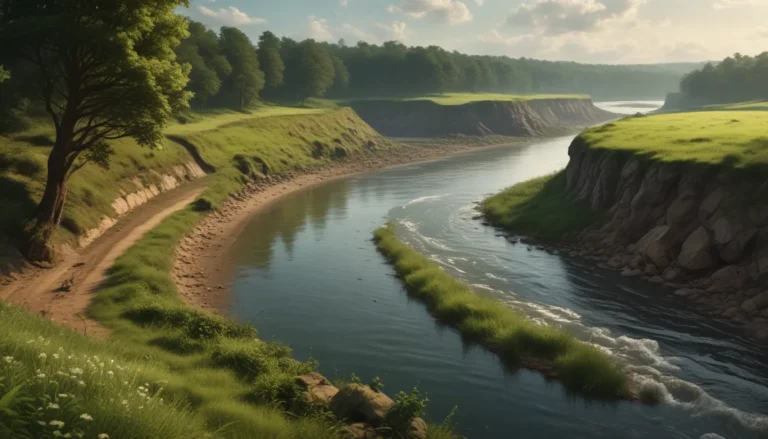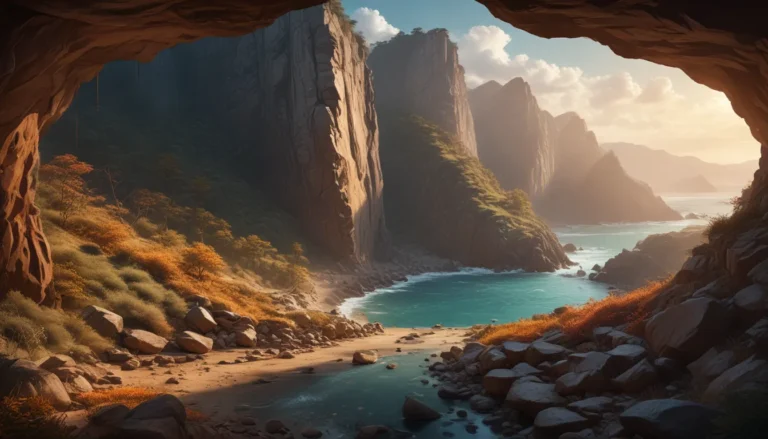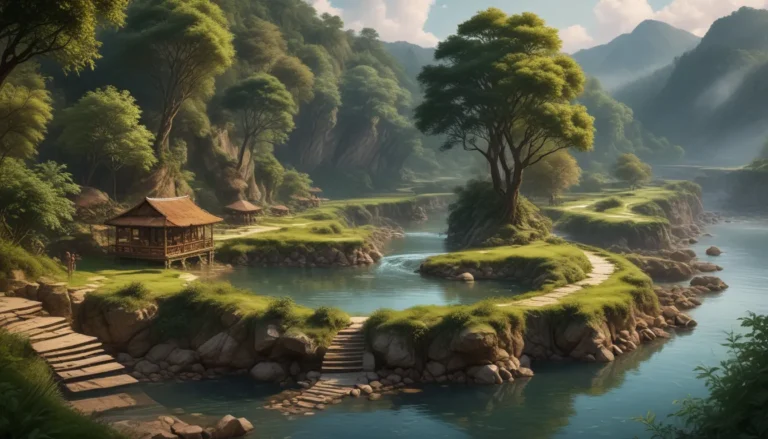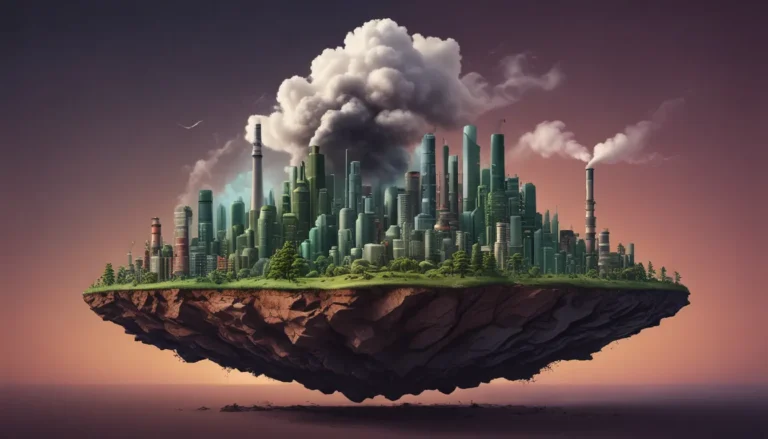A Note About Images: The images used in our articles are for illustration purposes only and may not exactly match the content. They are meant to engage readers, but the text should be relied upon for accurate information.
Polar climates are known for their extreme conditions and unique ecosystems, making them some of the most captivating environments on Earth. From the icy landscapes of the Arctic to the frozen expanses of Antarctica, these regions offer a glimpse into a world of incredible beauty and resilience. In this article, we will delve into 19 astonishing facts about polar climates that will leave you in awe of the sheer wonders that exist in these remote and challenging environments. So, let’s journey into the heart of the polar regions and uncover the fascinating secrets they hold.
Key Takeaways:
- The polar regions are home to the largest ice sheets on Earth, playing a crucial role in regulating global temperatures and providing valuable insights into climate change.
- Unique ecosystems thrive in the polar climates, supporting diverse wildlife and impacting global weather patterns.
The Polar Ice Sheets: A Remarkable Reservoir of Freshwater
Spread across millions of square kilometers, the polar ice sheets hold about 99% of the world’s freshwater ice. These massive ice formations play a vital role in regulating global temperatures and are essential for scientific research. The ice sheets, particularly in Antarctica, contain a significant amount of the Earth’s freshwater resources and contribute to the overall balance of our planet’s climate.
Incredible Temperature Extremes: The Coldest Place on Earth
The lowest temperature ever recorded on Earth was in Antarctica, where the mercury plummeted to a bone-chilling -128.6 degrees Fahrenheit (-89.2 degrees Celsius) in Vostok Station. This record-breaking cold showcases the extreme conditions that exist in the polar regions and highlights the resilience of the wildlife that calls these areas home.
Diverse Arctic and Antarctic Contrasts
While both the Arctic and Antarctica are polar regions, they each have distinct characteristics. The Arctic is an ocean surrounded by land, teeming with diverse wildlife such as polar bears, seals, and walruses. In contrast, Antarctica is a landmass surrounded by ocean and is home to unique adaptations like penguins and seals. These differences add to the allure and fascination of exploring polar climates.
Melting Polar Ice Caps: A Cry for Help
The polar ice caps are melting at an alarming rate due to climate change, leading to rising sea levels and endangering polar wildlife. The rapid disappearance of these vital ice formations not only impacts the ecosystems of the polar regions but also has global implications for coastal communities and marine life around the world.
The Enchanting Northern Lights: Nature’s Light Show
The Northern Lights, also known as the Aurora Borealis, are a stunning phenomenon of the polar regions. Caused by collisions between charged particles from the sun and the Earth’s atmosphere, these mesmerizing lights dance across the sky in a display of vibrant colors. Witnessing the Northern Lights is a once-in-a-lifetime experience that showcases the magical beauty of the polar climates.
Midnight Sun and Continuous Daylight
During the polar summer, the phenomenon known as the midnight sun occurs, where the Sun remains visible 24 hours a day for weeks or even months. This unique occurrence provides continuous daylight in the polar regions, allowing for incredible experiences and observations of the natural world in a state of perpetual sunlight.
The Antarctic Ice Sheet: A Massive Frozen Landscape
The Antarctic Ice Sheet is the largest single mass of ice on Earth, stretching over 14 million square kilometers and containing about 26.5 million cubic kilometers of ice. This immense ice formation plays a crucial role in regulating global temperatures and is a key indicator of the health of the planet’s climate system.
Biodiversity in the Arctic: A Thriving Ecosystem
The Arctic region is home to diverse wildlife that has adapted to survive in the extreme conditions of the polar climate. From polar bears and seals to reindeer and various bird species, the Arctic ecosystem is a remarkable example of resilience and biodiversity in the face of harsh environmental challenges.
The Chill of Antarctica: The Coldest Continent
Antarctica holds the title of the coldest continent on Earth, with an average annual temperature of -57 degrees Fahrenheit (-49 degrees Celsius). The icy expanses of Antarctica are home to unique species like penguins and seals, showcasing the incredible adaptations that allow life to thrive even in the harshest of environments.
Layers of Polar Ice: A Frozen Legacy
Polar ice can reach thicknesses of over 2 miles, a result of snowfall accumulation over thousands of years. These immense ice formations provide a glimpse into Earth’s climatic history and play a vital role in shaping the landscape and ecosystems of the polar regions.
The Dry Deserts of Polar Climates
Despite being covered in ice, the polar regions are classified as deserts due to the lack of precipitation. The extreme cold and dryness of these environments pose unique challenges for life to survive, leading to the evolution of specialized adaptations in the flora and fauna that call the polar regions home.
Arctic Sea Ice: A Reflective Shield
Arctic sea ice is vital for regulating global temperatures, as its white surface reflects sunlight back into space, helping to cool the planet. The bright expanse of sea ice plays a critical role in maintaining the delicate balance of the Earth’s climate system and is a key factor in the resilience of the polar ecosystems.
Scientific Exploration of the Polar Regions
The polar regions serve as crucial hubs for scientific research, where scientists study climate change, wildlife, and various other aspects of the polar environments to better understand their importance and impact on the Earth. These research efforts provide valuable insights into the complex interactions between climate, ecosystems, and human activities in the polar regions.
Ecosystem Diversity in Polar Climates
Despite the harsh conditions, the polar climates support unique ecosystems that host a range of cold-adapted organisms, including microorganisms, fish, and invertebrates. These cold-loving species have evolved specialized adaptations to thrive in the extreme environments of the polar regions, contributing to the biodiversity and resilience of these ecosystems.
The Ozone Hole: A Fragile Shield
The ozone hole is more prominent in the polar regions due to human activities such as the release of chlorofluorocarbons (CFCs). These harmful compounds thin the ozone layer over the polar regions, leading to the formation of the ozone hole and increased ultraviolet radiation exposure on the Earth’s surface.
Impact on Global Weather Patterns
The polar climates have a profound impact on global weather patterns, as the cold air masses from these regions interact with warmer air, influencing weather systems around the world. Changes in the polar climates can have far-reaching effects on atmospheric circulation and weather phenomena, highlighting the interconnectedness of Earth’s climate system.
Indicators of Climate Change
The polar regions are crucial indicators of global climate change, providing valuable insights into the overall health of the planet and the effects of global warming. Monitoring changes in the polar climates helps scientists track the impacts of climate change on ice sheets, ecosystems, and wildlife, shaping our understanding of the Earth’s changing climate system.
International Cooperation and Conservation Efforts
To protect the delicate ecosystems of the polar regions and manage the resources sustainably, international treaties and agreements such as the Antarctic Treaty System and the Arctic Council have been established. These cooperative efforts aim to safeguard the unique environments of the polar regions and promote conservation practices that preserve the biodiversity and resilience of these vital ecosystems.
Conclusion: Embracing the Wonders of Polar Climates
In conclusion, exploring the astonishing facts about polar climates reveals the unique beauty and fragility of these remarkable regions. From the mesmerizing Northern Lights to the incredible adaptations of polar wildlife, the polar climates continue to captivate and inspire curiosity and awe. Understanding and protecting these invaluable ecosystems is essential for the future of our planet, as they play a crucial role in regulating the Earth’s climate and supporting biodiversity.
Exploring the wonders of polar climates provides us with a greater appreciation for the natural world and the importance of conservation efforts. Whether it’s marveling at the icy landscapes or encountering majestic wildlife, the polar regions offer a glimpse into a world of wonder and resilience that deserves our admiration and protection.
FAQs
- What is a polar climate?
-
A polar climate is characterized by extremely cold temperatures, usually below freezing, and a lack of vegetation. These regions are found near the Earth’s poles, including the Arctic in the northern hemisphere and Antarctica in the southern hemisphere.
-
How cold does it get in polar climates?
-
Polar climates can reach extremely low temperatures, with the coldest temperatures ever recorded being about -128.6°F (-89.2°C) in Antarctica. In the Arctic, temperatures can dip below -40°F (-40°C) during the winter months.
-
What kind of wildlife can be found in polar climates?
-
Polar climates are home to a variety of unique and specialized wildlife. Some iconic species found in these regions include polar bears, penguins, Arctic foxes, walruses, seals, and various species of whales.
-
How are polar climates affected by climate change?
-
Climate change has a significant impact on polar climates. Rising temperatures lead to the melting of polar ice caps, affecting the delicate balance of ecosystems and posing negative implications for wildlife and global weather patterns.
-
Can humans survive in polar climates?
-
While it is challenging for humans to live in polar climates due to harsh conditions and limited resources, research stations and small communities of scientists and researchers are established in these regions to study the environment and wildlife.
-
Why are polar climates important?
- Polar climates play a crucial role in regulating the Earth’s climate and temperature. The polar ice caps reflect sunlight back into space, cooling the planet, and the regions are home to unique ecosystems and wildlife, making them vital for biodiversity and scientific research.
In conclusion, the astonishing facts about polar climates offer a glimpse into the wonders of these unique and captivating environments. Embracing the beauty and resilience of the polar regions inspires us to appreciate and protect these vital ecosystems for generations to come. By exploring and understanding the complexities of polar climates, we can gain a deeper appreciation for the intricate balance of nature and the urgent need for conservation efforts to safeguard the planet’s fragile ecosystems.
